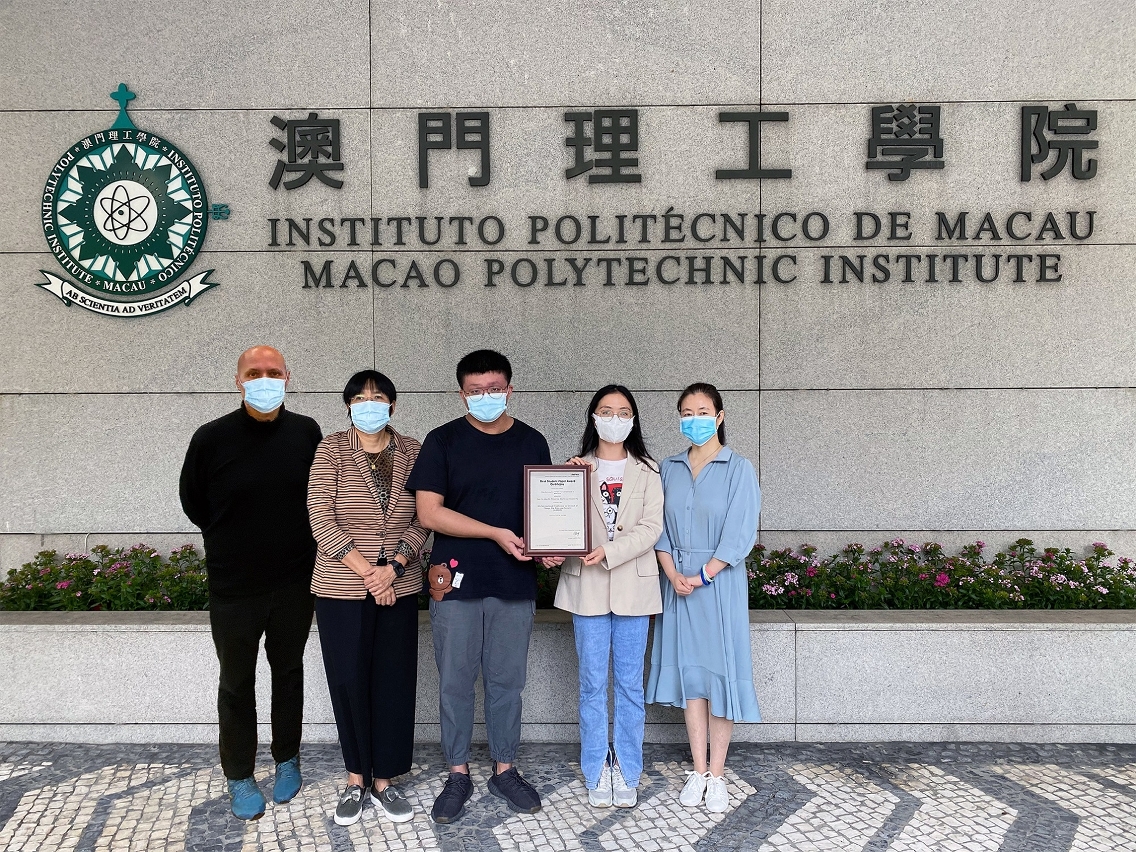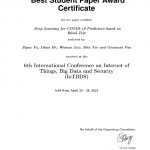 Ziyue Yu (middle), Lihua He (second from right), Professor Giovanni Pau (first from left), Professor Rita Tse (second from left) and Associate Professor Wuman Luo (first from right)
Ziyue Yu (middle), Lihua He (second from right), Professor Giovanni Pau (first from left), Professor Rita Tse (second from left) and Associate Professor Wuman Luo (first from right)
Ziyue Yu and Lihua He, two PhD students of Macao Polytechnic Institute (MPI), recently won the Best Student Paper Award for their paper “Deep Learning for COVID-19 Prediction based on Blood Test” at the 6th International Conference on Internet of Things, Big Data and Security (IoTBDS 2021). This is the only best student paper at IoTBDS 2021, and was widely commended by the conference participants.
IoTBDS aims at addressing the advanced issues surrounding the Internet of Things (IoT) technologies and the big data collected from the IoTs. The conference is an authoritative and influential international event in the field of information technology, which draws researchers from all over the world to participate. IoTBDS 2021 was held from April 23 to 25, and all of the accepted papers will be indexed in the world-renowned citation databases Scopus and Engineering Index, etc.
Ziyue Yu and Lihua He conducted the research on COVID-19 prediction methods under the supervision of Professor Giovanni Pau, Professor Rita Tse and Associate Professor Wuman Luo. As compared with the method based on the nucleic acid test, the blood test has the advantage of lower false negative rate. Although several machine learning methods have been proposed to address this issue, the research of COVID-19 prediction based on deep learning is still in its preliminary stage. In this paper, the authors proposed four hybrid deep learning models, namely CNN+GRU, CNN+Bi-RNN, CNN+Bi-LSTM and CNN+Bi-GRU, and applied them to the blood test data from the Israelita Albert Einstein Hospital, Brazil. They implemented the four proposed models as well as other existing models CNN, CNN+LSTM, and compared them in terms of accuracy, precision, recall, F1-score and AUC. The experimental results showed that CNN+Bi-GRU achieves the best performance in terms of all the five metrics. These research results can aid in the effective and accurate prediction of COVID-19. The research has considerable practical and academic value in the era of challenging international anti-epidemic efforts, and is expected to be used extensively in the work of epidemic prevention.



